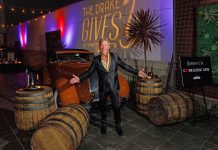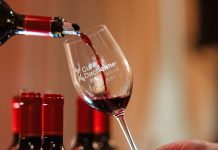Since the weather is still beautiful, and I am going sailing today, I thought I would sneak in an end-of-the-season column on the magnificent Newport Harbor and Bay.
There is much to share, but I thought I would start with two elements.
First off, Chris Miller, the harbor resources manager, says, “Here’s a concept that I’ve thought about for a while and wondered why no one has. Why is it we refer to water related environmental projects as ‘green’? Wouldn’t it be more appropriate to call them ‘blue’ projects?”
Great question from the stewards of our harbor resources, and the answer is “yes.”
Second is this: the advice you really need to listen to is the NB Indy’s Mike Whitehead who writes every week in these pages. He is the real-deal authority.
When talking about “blue” projects in an attempt to inform folks on the watershed surrounding the second largest marina in the US, I think you need to start with Duffy Boats.
I love a great story, like the one about a company that was selling soap. To promote the soap, they gave away baking soda. Baking soda was so popular, they started selling it. To promote that, they put this new thing in the box, called chicle, and now you know why the Wrigley family owns so much of Catalina Island.
“Duffy” Duffield pioneered the electric recreational craft that bears his nickname, some 40 years ago. Electric boats do not run on gas, do not have offensive emissions, and are quiet. And, like the Wrigleys, Duffy came up with the idea after he got in trouble for returning his parents’ gas boat without gas. Brilliant. Problem solved.
I called around to folks on the Harbor to get a snapshot of how businesses think and approach water quality. It needs to be said that eight surrounding cities encompassing 152 miles make up the watershed for the Back Bay. So what happens outside of Newport Beach is as important as what happens in Newport Beach. I believe, as you move farther from the harbor and bay, awareness and best practices diminish proportionately.
Jesse Salem is CEO and Shipyard Manager for Newport Harbor Shipyard and he gets it.
“We have a proactive approach to environmental issues, they are not a burden,” he says. “It is just good business.”
Winner winner chicken dinner.
Although shipyards and other amenities or necessities like gas docks are highly regulated, Salem proudly shared that his shipyard uses a closed-loop recycling system that captures industrial run-off and the first tenth of an inch of storm-water flow. What does not evaporate, is – you guessed it – reused in their operation.
There is the Clean Marina Program that will drive more blue outcomes, where the purpose is to encourage marinas and yacht clubs to adopt best management practices to prevent or reduce pollution in our coastal waters. A checklist guides education and training while encouraging boaters and employees to protect the environment. A pledge to implement and utilize these best practices earns a Clean Marina designation.
Councilwoman Nancy Gardner’s monthly newsletter highlights the recent article in Storm Water, an industry magazine I read, which “describes their simple but interesting experiment on gutters and biofilms. On the off chance that this isn’t at the top of your reading list, the significant thread is that certain tests for recreational water quality may give results that overestimate the health threat to swimmers. If this is substantiated by further testing, it could well change the way we test for water quality.”
Ray Hiemstra and the good folks at Coastkeepers have had some blue success on the topics of eelgrass and copper in Newport Bay. Eelgrass is like what water quality is to folks that do not frequent the harbor, where awareness is low, yet need have is high. Eelgrass performs vital functions by providing habitat and is an integral part of the natural water cleaning, yet many see eelgrass as a pest weed. Coastkeepers develops educational programs and is seeking solutions of how to grow and site this necessary marine element.
If you have a boat, then you understand antifouling boat paints, and hopefully that they do not contain copper. Copper is toxic to fish and other aquatic species. Utilizing best available technologies offers non-toxic alternatives to achieve a cake-and-eat-it-too outcome: marine enjoyment and protection of our community asset.
But, there are folks that need additional help. That is why there are programs where enforcement entities will come and drop dies onto the ships head to test for leaks. In my opinion, there is nothing more educational than a citation, that educates the captain and a bunch of his friends who he tells about being busted in the name of a blue harbor.
“Vote Blue Every Day” by using your purchasing power and voice to achieve the sustainable outcomes of a blue harbor and bay.
Email JimFitzEco@gmail.com




